11 Diverse Vampire Stories To Read Instead of Midnight Sun
Looking for more diverse and imaginative takes on the vampire genre? We have some recommendations...
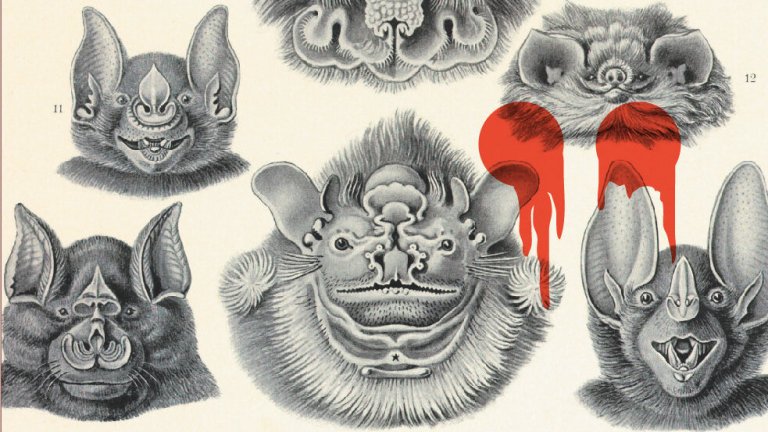
There’s a very good chance we’re going to read Midnight Sun, the companion novel to pop culture juggernaut Twilight that retells the first story in the Stephanie Meyer YA vampire series from Edward Cullen’s perspective. But we can enjoy something while also being critical of it, and the truth is: our culture deserves more, better vampire stories than what the Twilight saga has to offer. With that in mind, we’ve pooled our collective knowledge to recommend the following vampire stories that have more diverse and imaginative takes on the popular genre. From short stories to book series, hopefully there’s something here for you…
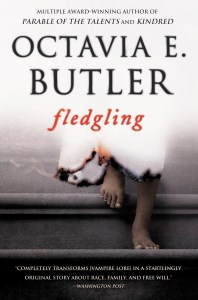
Fledgling by Octavia Butler
A good general rule of life to follow is that if Octavia Butler has written something in a particular genre, you should read it. And that’s as true in the world of vampire fiction as anywhere else. Fledging was the final book Butler published before her untimely death in 2006 and, though it’s technically a vampire story, it’s also a whole lot more than that.
Much in the same way that Butler’s Kindred is a time travel story that tackles physical and psychological horrors of slavery, Fledging is a vampire tale that explores issues of racism and sexuality. In it, a 10-year-old girl with amnesia discovers that she’s not actually a girl at all, but a fifty-something hybrid member of the Ina. Ina are basically what we understand as vampires in this universe – they’re a nocturnal, long-lived species who survive by drinking human blood. They’ve formed something of a symbiotic relationship with the humans they live alongside, using them as a food source in exchange for boosting their immune systems and helping them live (much) longer.
As Shori regains her memories of her former life, Fledging uses her unique situation as an avenue to explore timely issues of bigotry and identity. As a human-Ina hybrid, Shuri has been genetically modified to have dark skin, allowing her to go outside for brief periods during the day, but drawing the ire and distrust of others. As the novel further explores complex issues of family and connection – both the Ina and their human symbionts tend to mate in packs – Butler pokes at Shori’s uniquely uncomfortable position of being the master over one particular group, even as she herself is considered part of something like an underclass within Ina culture. And the end result is something that’s much more than a vampire tale, even as it embraces—and outright parodies—some of its most obvious tropes.
– Lacy Baugher
Buy Fledgling by Octavia Butler on Amazon.

The Coldest Girl in Coldtown by Holly Black
Twilight’s sin was not in trying to make vampires sexy all over again (it’s OK to make bloodsuckers cool), but rather in amplifying the teenage girl protagonist’s desire while blunting her agency. In doing so, Meyer maintained the dynamic of traditional vampire narratives instead of modernizing it. Five years after Breaking Dawn was released, Holly Black redeemed the YA vampire novel with her standalone tale, set in a world where it’s not just one hormonal teenager who’s dying to be a vampire, but all of society craving that sweet sweet immortality.
In Black’s world, everyone wants to be Cold: infected by a vampire bite but neither killed nor made into a fully-fledged vampire. Not until they drink human blood, at least. But in an effort to control the rising population of vampires and Cold people, the governments created Coldtowns, trapping both in a never-ending party town. The titular Coldest girl is Tana, who wakes up after a (very human, very teenage) rager to find almost everyone slaughtered and herself bitten. Fearing that she has become Cold, she voluntarily turns herself in to the nearest Coldtown along with her also-bitten ex-boyfriend Aidan and Gavriel, a vampire who seeks to take down the uber-vampire who rules the Coldtown.
The Coldest Girl in Coldtown is a sly riff on the vampire obsession that took over pop culture in the early 2000s, yet still its own cautionary tale about chasing after a glamorous, self-destructive afterlife. The cast of characters are fully fleshed-out, from a twin with a fangirl blog to Gavriel as an actually suitable vampire love interest to Tana Bach herself, who gets to be proactive where Bella Swan was always reactive. Best of all, it knows that it doesn’t need to lure readers back to a franchise, like vampires returning again and again to feed, instead telling its entire story in one bloody, chilly gulp.
—Natalie Zutter
Buy The Coldest Girl in Coldtown on Amazon.
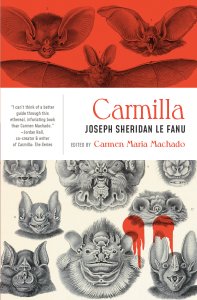
Carmilla by Joseph Sheridan LeFanu, edited by Carmen Maria Machado
A quarter-century before Bram Stoker’s Dracula, a different vampire seduced young women away from the suffocating constraints of their lives by awakening within their blood a thrilling, oft-considered perverse, desire. That it is a female vampire—the eponymous Carmilla, known also by her aliases Mircalla and Millarca—likely explains why LeFanu’s text is either incredibly well-known among niche circles, or entirely absent from pop cultural canons. Yet the moment you read it, its depiction of the heady attraction between innocent Laura and possessive Carmilla is anything but subtext.
Like Dracula, this Gothic horror novella is presented as a found text, with a frame narrative of occult detective Dr. Hesselius presenting Laura’s bizarre case… but also to some extent controlling her voice. In her new introduction, Machado posits a startling new contextualization: that Hesselius and Laura’s correspondence is not a fictional device, but a fictionalization of real-life letters between a Doctor Peter Fontenot and Veronika Hausle, about the latter’s charged relationship with the alluring Marcia Marén. That their relationship provided the basis for Laura and Carmilla, but that only the tragic parts were transmuted through the vampire metaphor, excising the queer joy of their partnership, further illustrates how these stories fail their subjects. Yet neither is Marén wholly innocent; as with In the Dream House, Machado does not flinch away from imperfect or even violent queer relationships, such as they resemble any other dynamic between two people.
It’s best to read Machado’s Russian nesting doll narrative without knowing much about her motivations. Though it might be useful to consider how she ends the introduction with something of a confession: “The act of interacting with text—that is to say, of reading—is that of inserting one’s self into what is static and unchanging so that it might pump with fresh blood.” Or try running some of these names through anagram filters.
And if that whets your appetite for other adaptations, the 2014 Carmilla web series both wrestles the frame story back into Laura’s hands, in the form of a video-diary journalism project, and makes the Laura/Carmilla romance very much text.
—Natalie Zutter
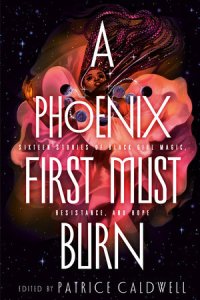
A Phoenix Must First Burn, edited by Patrice Caldwell
A Phoenix Must First Burn is a collection of sixteen short stories about magic, fantasy, and sci-fi that focus on Black women and gender non-conforming individuals. The book features stories about fantasy creatures of all kinds, witches, shape shifters, and vampires alike. What they have in common is that they are stories about and by Black people, and they offer unique takes on familiar lore.
Bella Swan is a great protagonist in the Twilight series because she is whatever the reader needs her to be. Just distinct enough that you can conjure her in your mind, but mostly a blank slate for the reader to step into the story with her, using her as their avatar. That’s a generality specific to White characters. In A Phoenix Must First Burn, the protagonists are Black. This gives them a very particular point of view, and one that isn’t as common in fantasy, and in the vampire tales of yore.
In Stephenie Meyer’s world vampires look like they’re lathered in Fenty body shimmer when they’re in direct sunlight. In “Letting the Right One In,” Patrice Caldwell gives us a vampire who is a Black girl, with dark brown skin, and coiled hair. Sparkling vampires are certainly a unique spin, but the Cullens are still White and don’t challenge any ideas of what it means to be an immortal blood-drinking creature of the night. A Phoenix Must First Burn shifts the lens to focus on the experience of Black folks, and allows them to be magical, enigmatic, and romantic.
– Nicole Hill

Certain Dark Things by Silvia Moreno-Garcia
In the Twilight series, we’re introduced to vampires from other cultures, but they are all very much the same, save for their individual power sets which appear to be unrelated to their ethnicity or nationality. In Certain Dark Things, vampires are a species with several different subspecies and where they come from influences how they look and what kind of powers they have.
Atl is from Mexico and is bird-winged descendent of Blood-drinking Aztecs. The Necros, European vampires, have an entirely different look and set of abilities. Certain Dark Things doesn’t just include vampires from all around the world, it incorporates vampire mythology from all of those places, filling its world with a rich array of distinct vampires with their specific quirks and gifts.
In his four-star review of the book on Goodreads, author Rick Riordan had this to say. “Throwing vampire myths from so many cultures together was right down my alley. If you like vampire books but would appreciate some . . . er, fresh blood . . . this is a fast-paced read that breathes fresh life into the genre.” Riordan, who opened up his literary world to new storytellers and has championed authors of color is certainly a person whose opinion holds weight. Vampires haven’t gone out of style, but the Draculas and Edward Cullens are.
– Nicole Hill
Buy Certain Dark Things on Amazon.
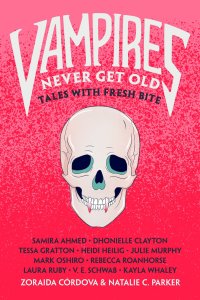
Vampires Never Get Old, edited by Zoriada Córdova & Natalie C. Parker
This anthology featuring vampires who lurk on social media just as much as they lurk in the night will hit the bookstore shelves on September 22, just in time to start prepping for Halloween. Edited by Zoriada Córdova and Natalie C. Parker, the collection features eleven new stories and a really fantastic author list, populated with a diverse group of authors from a ton of backgrounds and sexualities. The contributors include V. E. Schwab, known for her “Darker Shade of Magic” series; Nebula, Hugo, and Locus Award-winner, Rebecca Roanhorse; Internment author Samira Ahmed; Dhionelle Clayton, author of The Belles and Tiny Pretty Things; “The Blood Journals” author Tessa Gratton (who also contributed to the super spooky looking Edgar Allan Poe-inspired His Hideous Heart); Heidi Heilig, author of the “Shadow Players” trilogy; Julie Murphy, whose book Dumplin’ was adapted for the Netflix film of the same name; Lammy Award winner Mark Oshiro, whose forthcoming YA fantasy Each of Us a Desert will hit stands just before this anthology; Thirteen Doorways author Laura Ruby; and essayist and short story writer Kayla Whaley.
There are a lot of YA authors on this list, many of whom crossover to adult, so there’s a good chance readers will find some of their favorite kinds of angsty vampires on these pages, as well as body-conscious vampires, and vamps coming out as well as going out into the night, seeking for their perfect victim—or just looking for love.
– Alana Joli Abbott
Buy Vampires Never Get Old on Amazon.
Choice of the Vampire by Jason Stevan Hill
Back in 2010, when I was first getting to know interactive fiction, Jason Stevan Hill wrote Choice of the Vampire for the still-relatively new company, Choice of Games. A sequel came out in 2013, and this year, the third interactive novel, in which you, the reader make the choices, releases. Best played from a mobile device (although you can play in your browser as well), the interactive novels from Choice of Games are always fun (disclosure: I have written a few), and they’re dedicated to featuring inclusive options to let players express their personalities, gender identities, and sexualities within the confines of the game. Choice of the Vampire starts players as young vampires in 1815 New Orleans. In The Fall of Memphis, the story moves to 1873, and rather than facing the concerns of learning to survive their unlife adventures, players get embroiled in the politics of Memphis, where vampires are electing a new Senator, and the Klan is on the rise.
With the release of St. Louis, Unreal City, the intention is that the two earlier games will be combined into one larger omnibus, so that players can have an uninterrupted play experience of the full story. St. Louis, Unreal City moves the story forward into 1879, in a St. Louis where the first wave of Chinese immigrants and the dismantling of Reconstruction force the city to face its systemic racism. As workers demand greater rights—and rich financiers attempt to keep control of the nation’s wealth—vampires have to continue to hide, lest they be destroyed. But when one of their own lets loose the beast, causing terror in the streets of America, players have to decide how their character will triumph in a changing world. Stevan Hill pours a ton of historical detail into the scenes he creates, making these vampire stories as much historical fiction as they are fantasy or horror. In advance of the release of the newest installment, the first two games have been updated with new material, so if you’ve played them before, they’re worth a replay before you launch into Night Road!
– Alana Joli Abbott
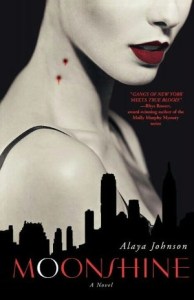
Moonshine by Alaya Dawn Johnson
Like the first two Choice of the Vampire stories, Moonshine, which came out in 2010, embroils its protagonist in the social struggles of its era: the 1920s of New York City. Zephyr Hollis is an activist, devoted to creating equality for both humans and Others, including vampires, despite her upbringing as the daughter of a demon-hunter. She’s immune to vampire bites, which is helpful when she discovers a newly-turned child vampire; if she turns him in, the authorities will kill him, so soft-hearted Zephyr takes the child in and feeds him her own blood. When she’s approached by a jinn, Amir, to use her cover as a charity worker to undermine a vampire mob boss in exchange for his help with the child, he doesn’t explain what he’s after—but Zephyr’s intrigued enough by the idea (and Amir) that she gets involved. If you already finished Johnson’s newest novel, The Trouble with Saints (also set in historical New York, this one during World War II), returning to this earlier novel and its sequel, Wicked City, will be a fast-paced treat.
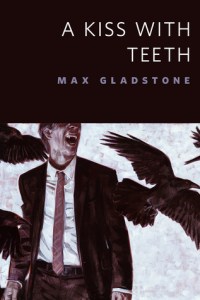
“A Kiss With Teeth” by Max Gladstone
There are not a ton of stories out there about vampire parenting—and fewer that are more about what it means to be a parent, what it means to give up the person you were before (even it that person was a monster). Max Gladstone’s 2014 short story, published at Tor.com, is absolutely a vampire story in the classic sense: a hunt, a victim, a struggle. But it’s also the tale of a vampire, Vlad, who settles down with a vampire hunter, and the changes that settling down create for both of them. How can a parent be honest with his child when he’s hiding something so core to his identity? Even playing baseball in the park requires Vlad to hide his own strength. And how can he work with the teacher to help his son with struggling grades when that teacher is the ideal prey? The idea of being a vampire blends with the idea of hiding an affair, of planning to do something that shouldn’t be done, and then determining whether or not to do it. The way the story is written, it’s hard to tell where it’s going to go, or how two parents hiding so much about themselves can ever be honest with their child—but when it comes to the end, Gladstone knocks it out of the park.
– Alana Joli Abbott
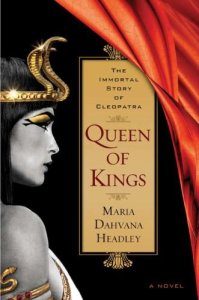
Queen of Kings by Maria Dahvana Headley
The visual of Cleopatra dying with a poisonous asp clutched to her breast is an iconic, Shakespearean-tinged bit of history that we all learned in our ancient Egypt history units. However, Headley’s debut novel gives the queen a bit more credit, by reimagining that instead of going all Romeo and Juliet after the supposed death of her lover Marc Antony, she strikes a bargain with Sekhmet, goddess of death and destruction who has nonetheless begun fading away due to a dearth of worship. In Shakespearean fashion, things go awry when Sekhmet seizes control of Cleopatra, transforming her into an immortal being and transmuting her revenge into a literal bloodlust.
Unable to die, with her lover still slain and her children in danger, Cleopatra must battle the dark force within her urging her to drain others of their lifeforce and let loose Sekhmet’s seven children (plague, famine, drought, flood, earthquake, violence, and madness) upon the ancient world. What’s more, she also has to contend with the mortal threat of recently-appointed emperor Caesar Augustus and the three sorcerers he has rallied to fight the queen-turned-demigod. Drawing from Egyptian mythology to contextualize various familiar vampire tropes (the aforementioned bloodsucking, aversion to sunlight, and weakness for silver), Queen of Kings reinvigorates the vampire mythos through a historical figure who deserved to exist long beyond her mortal lifetime.
—Natalie Zutter
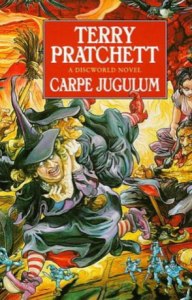
Carpe Jugulum by Terry Pratchett
Sir Terry never met a trope he didn’t take the opportunity to parody, but his Discworld take on the vampire mythos is more love bite than going for the jugular. His Magpyrs embody the classic vampires, with all their subgenre trappings, but also are an example of how a supernatural race seeks to evolve beyond its bloody history and try something new. To be clear, these Magpyrs are still in it to drain humans dry, and they’ve developed cunning methods of doing so: a propensity for bright colors over drab blacks, the ability to stay up til noon and survive in direct sunlight, a taste for garlic and wine along with their plasma.
But the clash between the youngest immortals, who seek to overtake the mountain realm of Lancre as their new home, and dutiful servant Igor, who misses “the old wayth” (he’s a traditionalist down to the lisp), reveals a tension familiar to any long-ruling dynasty or established subculture: Change with the times, or adapt but lose what makes you unique? In struggling with this intergenerational dilemma, the Magpyrs find the perfect opponents in Lancre’s coven: Granny Weatherwax, Nanny Ogg, Magrat, and Agnes—four witches who find themselves taking on different roles within the mother/maiden/crone dynamic as life changes force shifts in their identities. Between these relatable personal conflicts and a hall of vampire portraits that pays homage to Ann Rice and Buffy the Vampire Slayer, Carpe Jugulum gently ribs the vampire subgenre rather than put a stake through its heart.
—Natalie Zutter
Do you have any vampire story recommendations that challenge the traditional tropes of the genre in interesting and diverse ways? Let us know in the comments below.
